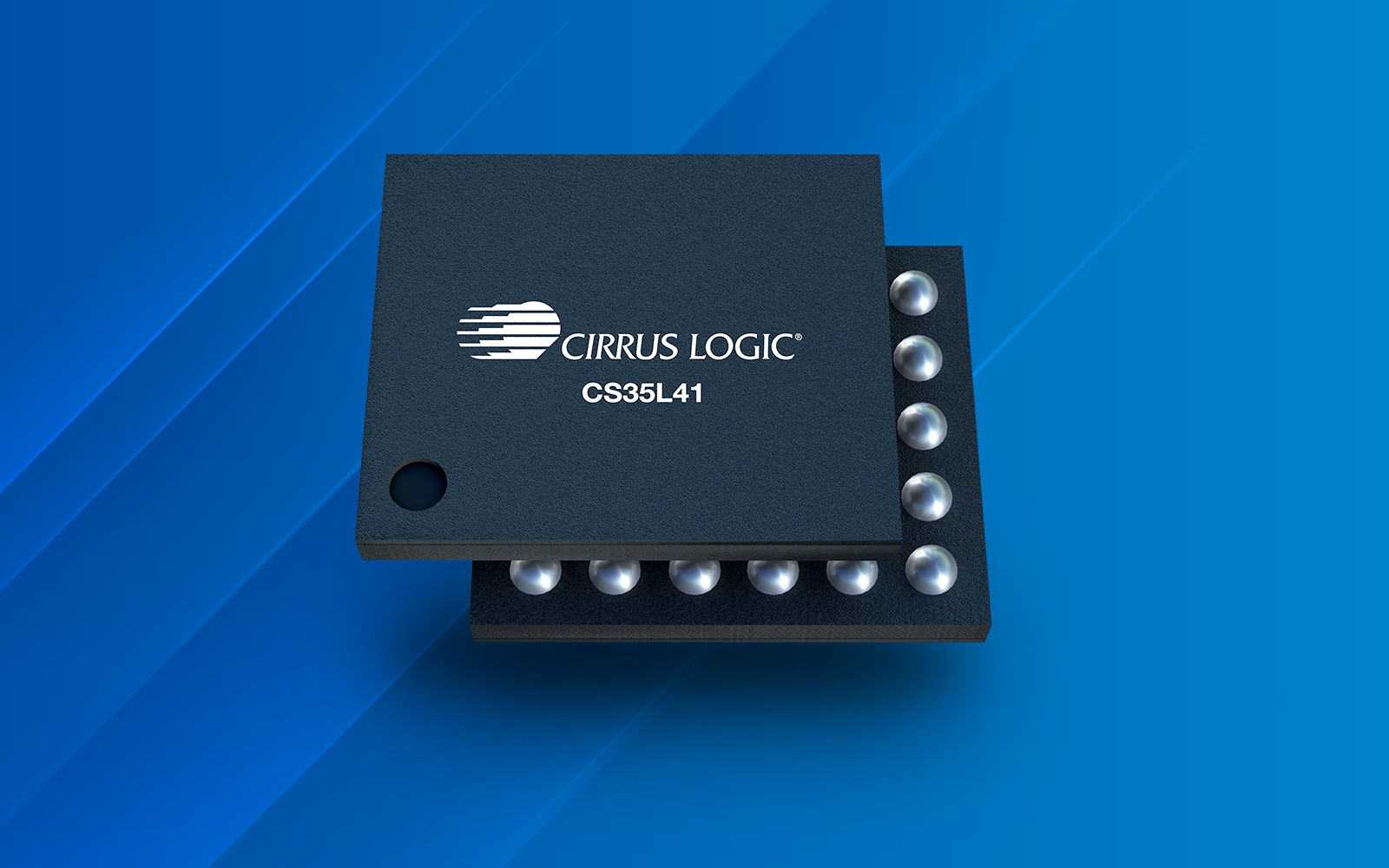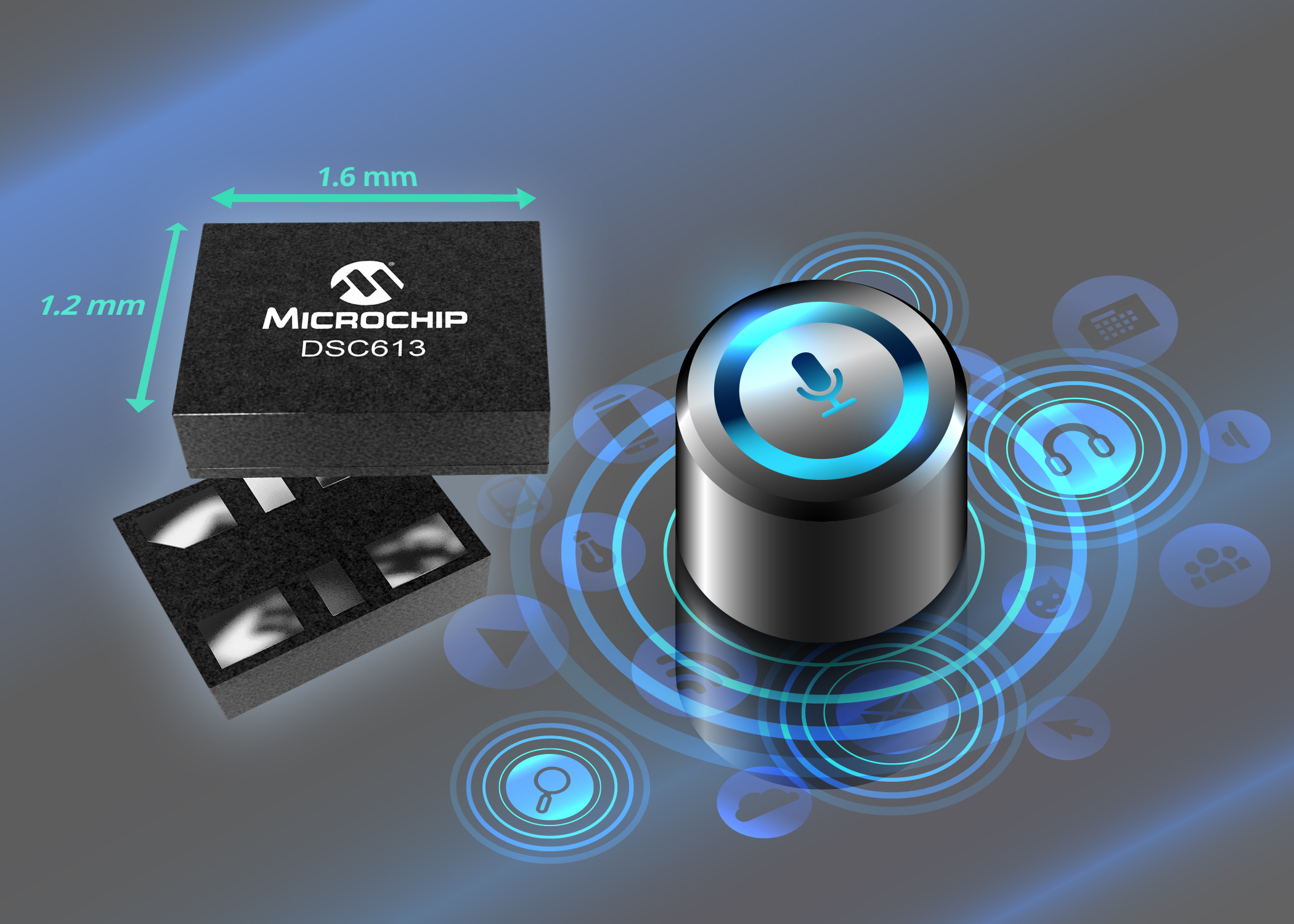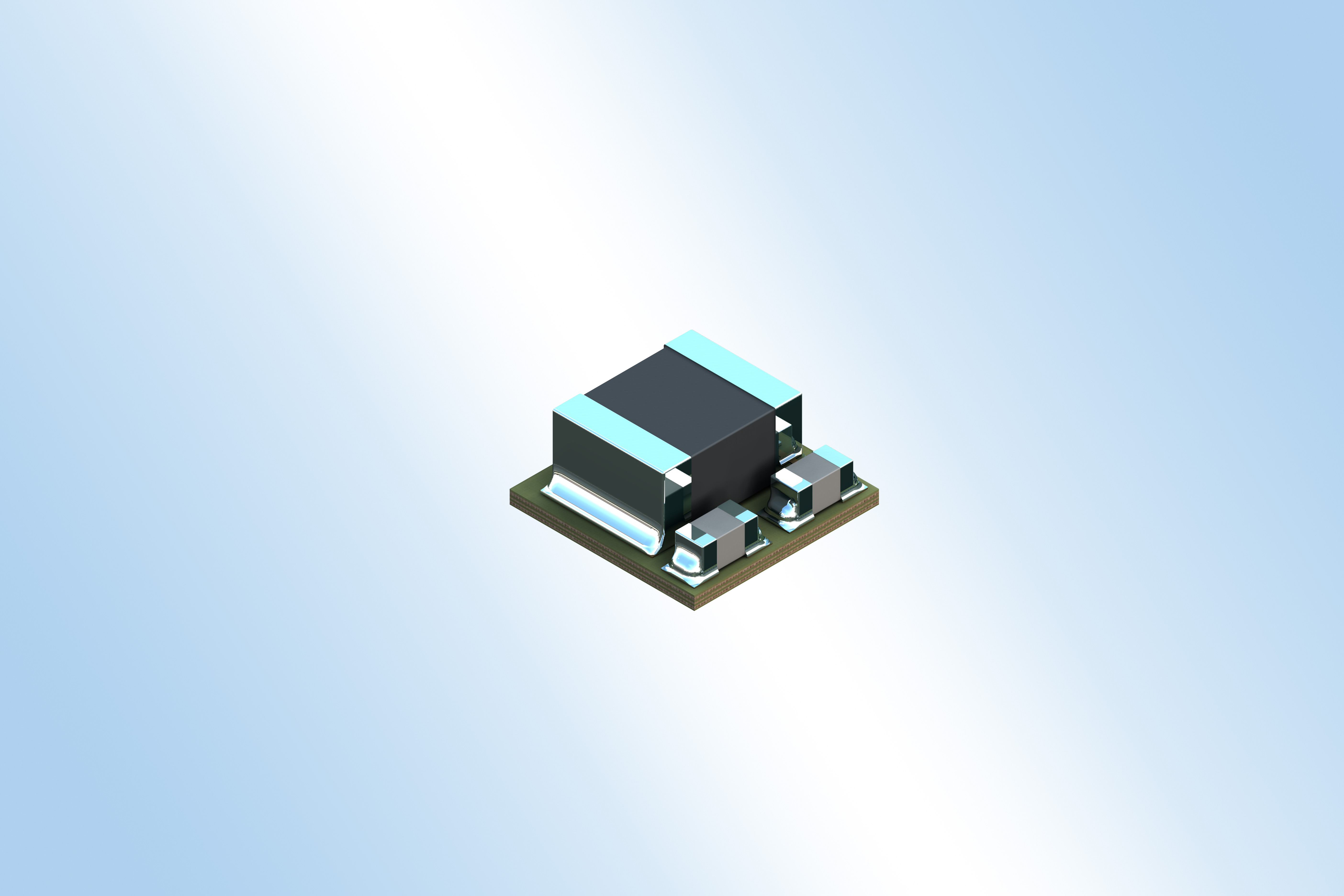By Gina Roos, editor-in-chief
Besides power consumption challenges, reducing board real estate is one of the biggest obstacles that designers face in new designs, particularly for newer portable electronics and wearable devices. This means that component manufacturers are developing new chips and solutions in smaller packaging with higher integration. But quite often, it’s not enough to just reduce the footprint; component manufacturers also have to deal with performance issues that often arise as they shrink the size of their components.
At the same time, component manufacturers need to offer the same or, preferably, better performance in the smaller package. Designers will notice in the list below that microelectromechanical system (MEMS) technology is driving a lot of the integration and smaller packaging.
Here are 10 devices that do double duty — shrink the solution size while delivering enhanced performance. These components range from sensors to timing devices.
ams, TMF8701 ToF sensor
Earlier this year, ams claimed the industry’s smallest integrated 1D time-of-flight (ToF) sensor, housed in a 2.2 × 3.6 × 1.0-mm package. The TMF8701 , used for proximity sensing and distance measurement in smartphones, such as triggering a facial-recognition system, can fit in a narrow bezel. This helps smartphone manufacturers achieve widescreen phone designs with a high display screen-to-body ratio.
A couple of drawbacks of 1D ToF sensors are that they are too large and the performance degrades in adverse lighting and when the display screen is dirty, said ams. The TMF8701 can identify reflections from fingerprint smudge contaminations on the display screen and optical reflections from objects beyond the cover glass, such as the user’s face, to maintain reliable performance.
The device also offers low-power operation. It draws only 940 µA in proximity-sensing mode when sampling at 10 Hz, which makes it a suitable companion to a smartphone’s facial-recognition system, said ams. Always on, it triggers the higher-power facial-recognition system to start up when the ToF sensor detects the presence of an object up to 60 cm from the display screen.
The integrated VCSEL emitter offers excellent immunity to interference from ambient light and produces accurate distance measurement in all lighting conditions, said ams. The module achieves accuracy of ±5% when measuring distance in the range of 20 cm to 60 cm in normal lighting conditions, and in bright sunlight (100 klux), ±5% accuracy is maintained at a range of up to 35 cm.
Bosch Sensortec , BMA400 accelerometer
Bosch Sensortec’s BMA400 accelerometer delivers an ultra-low-power acceleration sensor for wearables and IoT applications. The BMA400 is housed in a small 2.0 × 2.0 × 0.95-mm³ package. When combined with the integrated plug-and-play step counter, it makes the device very easy to design into a variety of wearable devices. The device also includes a built-in voltage regulator and flexible device tuning for power consumption, noise, and ODR parameters.
The ultra-low-current step counter, which draws only 4 μA, together with intelligent power management features like built-in activity recognition, helps extend battery life. The BMA400 also wakes up automatically only when it detects motion and goes back into sleep mode when the motion stops for longer battery life.
Lower power consumption is a big benefit when it comes to extending battery life. The BMA400 draws 10× less current than existing accelerometers. The sensor has a current consumption of 14 μA at the highest performance, continuous measurement, and a noise density of 220 μg/√Hz. This drops to 1 μA and below in the ultra-low-power self-wake-up mode.
Cirrus Logic Inc., CS35L41 smart power amplifier
The Cirrus Logic CS35L41 11-V boosted Class-D audio amplifier with DSP and the company’s SoundClear Playback software improves audio quality and increases the loudness of the smartphone speaker output while protecting the speaker. In addition, the smart power amplifier uses an advanced battery management system and predictive algorithms that adapt to changing audio, speaker, and battery conditions to minimize power consumption and battery current without sacrificing audio performance.

Thanks to 55-nm process technology, the audio chip is housed in a small, 5.64-mm2 wafer-level chip-scale package (WLCSP), enabling designers to pack in more features and functions for stereo audio in smartphones and portable devices. These devices are nearly half the size of other DSP smart amplifiers in the market today.
At the heart of the CS35L41 is a 5.3-W digital input, mono Class-D amplifier with the lowest noise and idle power consumption in its class, according to the company. It includes an integrated 11-V Class-H DC/DC converter, which boosts the supply voltage and maintains higher efficiency than other audio power amplifiers relying on Class-G boost regulators. Thanks to adaptive tracking at the audio level, the Class-H boost converter helps improve system efficiency, minimizes power dissipation, and preserves battery life.
Microchip Technology, DSC613 MEMS clock generator
Microchip’s multi-output MEMS clock generator may be the smallest in the industry, offering 80% board space savings on timing components. The challenge is that clock sources need multiple components to meet the frequency requirements of consumer portable devices, said Microchip, which translates into more board space and power. But Microchip has been able to develop a small MEMS clock generator, housed in a six-pin DFN measuring as small as 1.6 × 1.2 mm, that can replace up to three crystals and oscillators on the board, thus cutting the space needed for timing devices.

The DSC613 clock family eliminates the need for an external crystal by integrating a MEMS resonator and two low-power phase-locked loops (PLLs). Typically, smart devices need external crystals/oscillators next to the controllers on the board or a clock generator with an external crystal for the reference input.
The family supports up to three clock outputs from 2 kHz to 100 MHz, making it suited for microcontroller-based embedded systems. Applications include digital cameras, smart speakers, virtual-reality (VR) headsets, streaming sticks, and set-top boxes.
At approximately 5-mA power consumption with three outputs running, the family provides up to a 45% power savings when compared to a solution that uses three low-power quartz oscillators. The clock output can be turned off through the output enable pin for additional power savings, said Microchip.
Murata Manufacturing Co. Ltd., 6-A buck regulator
Murata Manufacturing Co., Ltd. claimed the smallest, most efficient, fully integrated 6-A buck regulator. The device’s footprint is 25% smaller than the nearest competitive solution with a 30% lower profile, measuring 12 × 9 × 2 mm. In addition, the buck regulator doesn’t need any additional external components to meet stringent transient requirements, which reduces the typical solution footprint to about 50% smaller.
The device is based on a unique two-stage power conversion architecture developed by the company’s semiconductor division, pSemi, through its acquisition of MIT spin-out Arctic Sand, which offers higher efficiencies and reduces the size of passive components required. In addition, the power architecture delivers about a 5× reduction in input ripple, lower conducted and radiated EMI emissions, and a wide temperature range of –40°C to 150°C.
The MYMGA1R86RELC2RA DC/DC converter is designed for two-cell, three-cell, and 12-V point-of-load applications that call for high efficiency, low profile, and small solution size. The module integrates all passive components, including bulk output capacitance, to meet the exact transient load requirements, which means that no additional external components are required for most applications.
Murata Manufacturing Co. Ltd., MEMS resonator
Murata also claimed the smallest 32.768-kHz MEMS resonator on the market late last year with the introduction of the new WMRAG series. Designed to deliver a smaller and more power-efficient solution for wearables, IoT devices, and health-care devices, the MEMS resonator reduces power consumption and maximizes battery charge by keeping resources not currently in operation in deep-sleep mode.
Thanks to MEMS technology, the new resonator offers high-quality frequency accuracy and a low equivalent series resistance (ESR) while reducing power consumption in a package that is more than 50% smaller (0.9 × 0.6 × 0.3 mm) than typical tuning fork quartz-crystal resonators.
The MEMS resonator provides a stable reference clock signal while using 13% less power than more traditional quartz-crystal resonators due to its low (75-kΩ) ESR, based on internal testing. In addition, the silicon-based WLCSP allows it to be co-packaged with an integrated circuit, which eliminates the need for external low-frequency clock references. It also integrates load capacitors, so no external multilayer ceramic load capacitors are needed, which further reduces board space.
SiTime, SiT15xx MEMS oscillators
Similar to other MEMS devices, SiTime’s MEMS oscillators offer higher integration and smaller packaging for mobile, IoT, and wearables. As an example, the SiT15xx 32-kHz MEMS oscillator, which replaces traditional quartz crystals, is available in several package options, including a chip-scale package that measures 1.5 × 0.8 mm, reducing the footprint of existing 2012 SMD crystal packages by up to 80%. It’s also 60% smaller than the 1610 XTAL package.
SiTime can also integrate MEMS resonator die with an SoC, ASIC, or microprocessor die within a package, which can eliminate the need for external timing components, delivering high integration and size reduction.
The SiT15xx devices also eliminate the need for output load capacitors because the output drives directly into the chipset’s XTAL-IN pin, said SiTime. It also doesn’t need to be placed next to the chipset because the oscillator can drive clock signals over traces, and when combined with an ultra-low profile of 0.55-mm height, it delivers greater design flexibility on the board layout. The timing devices also have a special power supply filtering that eliminates the need for an external Vdd bypass-decoupling capacitor, which further miniaturizes the solution and board design.
STMicroelectronics, LIS2DTW12 MEMS chip
Delivering integration with a small package, the STMicroelectronics LIS2DTW12 combines a MEMS three-axis accelerometer and a temperature sensor on a single die. Designed for space-constrained and battery-sensitive detectors such as shipping trackers, wearables, and IoT endpoints, the sensing accuracy of 0.8°C offers precision comparable with standalone standard temperature sensors. The device is available in an ultra-thin 2.0 × 2.0 × 0.7-mm LGA-12 plastic land grid array package.
In addition, the LIS2DTW12 offers a height of 0.7 mm, which is about 30% lower than other combination sensors, allowing for extra battery capacity for longer runtimes. It also provides several power-saving features that include a 50-nA power-down mode, multiple operating modes down to less than 1 µA, a dedicated internal engine for processing accelerometer signals, and a large 32-level FIFO to reduce intervention from the main controller.
Other key features include 65 user modes that enable developers to optimize power consumption and noise to meet application-specific requirements. It also offers user-selectable full-scale range up to ±16 g and measures acceleration with output data rates from 1.6 Hz to 1,600 Hz.
TDK Corp., µPOL DC/DC converters
TDK’s series of µPOL DC/DC converters , touted as the industry’s most compact and highest-power-density point-of-load (POL) solutions for applications such as big data, machine learning, artificial intelligence (AI), 5G cells, IoT, and computing enterprise, is housed in a 3.3 × 3.3 × 1.5-mm footprint. These devices minimize the required external components by integrating the IC and inductor in a single package instead of using a side-by-side discrete IC and discrete inductor.

The FS series µPOL DC/DC converters deliver a high-density solution of 1 W/mm3 while offering 50% less solution size than other products available in its class. This translates into lower system, assembly, and PCB costs, and it reduces the size of the PCB. It operates over a wide junction temperature range of –40°C to 125°C and is rated for industrial applications.
The µPOL technology was developed by TDK’s group company Faraday Semi. The new solutions combine high-performance semiconductors in advanced packaging technologies such as semiconductor embedded in substrate (SESUB) and advanced electronic components to achieve a smaller size and lower profile by 3D integration.
Texas Instruments, precision data converters
At the end of last year, Texas Instruments (TI) introduced four precision data converters, each touted as the industry’s smallest in its class. These digital-to-analog converters (DACs) and analog-to-digital converters (ADCs) are optimized for high-performance or cost-sensitive industrial, communications, and personal electronics applications such as optical modules, field transmitters, battery-powered systems, building automation, and wearables.
The DAC80508 and DAC70508 are eight-channel precision DACs that provide true 16- and 14-bit resolution, respectively, in 2.4 × 2.4-mm DSBGA and WCSP or 3 × 3-mm QFN-16 packages, offering a 36% space savings compared to competitive devices. They also integrate a 2.5-V, 5-ppm/°C internal reference to further shrink system size. In terms of better performance, the devices provide true, 1-least-significant-bit (LSB) integral nonlinearity to achieve the highest level of accuracy at 16- and 14-bit resolution, up to 66% better linearity than the competition, according to the company.
The ADS122C04 and ADS122U04 are 24-bit precision ADCs that feature a two-wire, I2 C-compatible interface and a two-wire, UART-compatible interface, respectively, in 3 × 3-mm WQFN or 5 × 4.4-mm TSSOP packages. These precision ADCs eliminate external circuitry by integrating a flexible input multiplexer, a low-noise programmable gain amplifier, two programmable excitation current sources, an oscillator, and a precision temperature sensor.
Advertisement
Learn more about ams (formerly austriamicrosystems)Bosch SensortecCirrus LogicMicrochip TechnologyMurata Electronics North AmericaSiTimeSTMicroelectronicsTDK AmericaTexas Instruments





